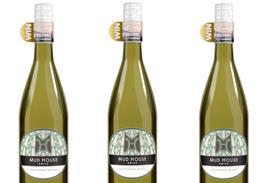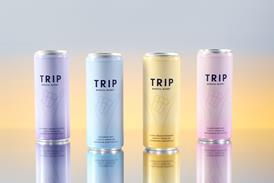Meal deals aren’t exactly new when it comes to retail sales mechanisms. Some of the multiples have been offering meal deals for almost a decade now, with the likes of Boots and the Co-operative Group getting their offering just right and expanding it regularly. And variety pays off, with HIM research showing that 23% of shoppers are willing to pay a higher price for a meal deal if there was a wider range of products.
In fact, according to Boots, its meal deal offering is so large that you would need a stadium 94 times bigger than Wembley, filled with people eating a different Boots Meal Deal, before any two people would have exactly the same combination of products.
Meal deals around the clock
Country Choice believes that retailers can capitalise on all three meal occasions if they avoid the ‘one size fits all’ approach and instead change the offer according to the time of day.
Convenience marketing manager Rebecca Whitmore says: “With very little effort it is simple to vary the offer throughout the day, starting with a breakfast bap and coffee in the morning, a burger or filled baguette and a soft drink at lunchtime, and finishing up with pizza and a bottle of wine in the evening.”
The brand recently introduced POGOs, a range of individual hot meals that take 40 minutes to heat and can be displayed in the hot food cabinet for up to four hours. Available in sausage hot pot, vegetable curry, beef hot pot, all-day breakfast, chicken tikka masala and chilli con carne, the range covers a variety of meal occasions.
Whitmore adds that in order to compete with the multiples, independent retailers must make sure they advertise their meal deal offerings. “Make sure you promote them properly - oversized shelf-talkers and posters situated near all the host products in the deal are a must,” she says. She also advises store owners to consider the use of window vinyls and ‘A’ boards outside.
Pricing of the deal is another consideration. “Round pound ideas are a good idea as they simplify and speed up the transaction process, which is an important consideration for consumers who want to be in and out in a hurry. For example, a retailer might offer a breakfast bap with an rrp of £1.89 and a coffee with an rrp of £1.50 at a round pound price of £3,” she adds.
It’s unlikely an independent retailer can compete with this, but they can make sure shoppers have enough choice to keep them interested.
Mohammed Islam of Day Today Wallyford in Edinburgh has a lunchtime and evening meal deal, and while the overall number of combinations he has may not need a mega stadium, they are a crowd pleaser. “Customers simply don’t have the time to think of and cook a full meal, so meal deals represent an easy option that is healthy and good value,” he says.
Mohammed utilises his extensive chiller space to offer a strong evening meal offering with plenty of meat and sides dishes to offer variety. “Shoppers don’t want the same thing every night, so by offering a few different options they will come back to you a couple of times a week. They rarely just buy the meal deal they’ll also pick up some snacks and something to drink so it boosts basket spend as well.”
Bedfordshire Nisa retailer Kishor Patel is a big advocate of meal deals, and focuses on the lunchtime offering. “The traditional meal deal option of a sandwich, packet of crisps and soft drink is still the most popular with customers, but there’s no harm in varying your offer otherwise customers will grow tired of it,” he says.
Kishor believes that meal deals have a dual benefit of attracting more customers and improving loyalty. “As well as generating more footfall, offering meal deals keeps you at the forefront of consumers’ minds,” he says. “If they know they can get a quick meal deal at your store, they will keep coming back.”
Concentrate on one area
When space is at a premium, catering for breakfast, lunch and dinner can be tricky. Tim Ellis of Momentum Instore marketing agency says it’s better to do one meal well to start with, rather than do all three poorly.
“Multiples have the space to stock everything from a freshly baked croissant for breakfast to a premium king prawn salad for dinner,” he says. “Convenience stores, however, need to be clever with their space and ensure they are giving their core target customers what they want, rather than trying to cater for everyone. Spreading yourself too thinly could be a dangerous tactic.”
Ellis believes that independent retailers should first stick to the lunchtime market, with a small breakfast offering for those on the go. “We would recommend that c-stores focus primarily on the growing lunchtime market, with an emphasis on the quick ‘grab and go’ customer,” he says. “A grab-and-go breakfast market is also emerging at the moment, with the launch of Weetabix breakfast drinks and a variety of breakfast biscuits for those running late for a train, or on their way to the office or a meeting.”
With more retailers embracing hot food to go, breakfast is the area in which convenience stores are most likely to be able to take on the multiples, with the quick service in a c-store making them the perfect morning stop-off.
Lunchtime meal deals made easy
Pepsico head of impulse Matt Goddard believes there are plenty of reasons why retailers should consider creating a lunchtime meal deal. “Meal deals tick a lot of the boxes that retailers should be looking to grow - they promote loyalty, additional footfall and increase basket spend,” he says. “There’s a lot of reasons why they are as successful as they are and have been introduced by so many stores.”
Worries about siting the products together can be solved easily thanks to clever merchandising units, he says. “There are display units that help retailers stock snacks in the soft drinks chiller without taking up too much space,” he points out.
However, Goddard advises retailers to keep it simple to start with. “Don’t worry about providing a massive variety,” he says. “Get the offering right first and gauge popularity, and then it can be expanded.”
He adds that you don’t have to copy the multiples’ format, either. “I’ve seen some stores use a two-part meal deal rather than a three-part, which offers a little more flexibility and has a good value perception,” says Goddard. “Look at what customers buy, ask them what they would expect to pay for a meal deal and how they would like it presented, and work from there.”
It doesn’t have to be a big offering, either. Some retailers offer a bacon buttie and coffee, while others keep it simple with juice and porridge pots for those more health-conscious consumers.
Sid Ali of Nisa Mintlaw in Aberdeen agrees that there is huge opportunity in the breakfast on-the-go sector, but believes it has yet to reach its potential and lays down a challenge to the manufacturers. “We’re stocking more breakfast on-the-go products, including the Weetabix breakfast drink which has been very popular thanks to the £1 promotional price and brand awareness, but I still don’t think any manufacturer has got their breakfast on-the-go offering right yet,” he says. “There hasn’t been one product that is synonymous with the meal. The one that comes up with that will be very successful.”
Evening meal success
When it comes to evening meals, Ellis notes that shoppers are increasingly expecting quality food. “There is a growing trend for couples and families to make more time to dine together, and along with this has come a shift towards more premium produce,” he says.
Time-pressed shoppers are also after a quick, easy and low-cost evening meal solution. Laura McLean, manager of Eurospar Cullybackey in Northern Ireland, offers a traditional meal deal menu for customers, and has developed a value offering for evening meals which comprises a ready meal and two sides for £5.
Sales have been impressive, she reports. “Customers come in after work not knowing what they want for dinner,” she says. “But they do know that they don’t want to spend too much on it, especially mid-week when they’re not looking to treat themselves. The £5 meal deal works really well as they pick up that at a value price as well as other items and feel they’re getting a decent meal at a good price.”
IN BRIEF
John West unveils snack range
John West has introduced a new range of lunchtime snacks. Steam Pots are available in five variants and feature tuna mixed with herbs and spices infused with olive oil, accompanied by flavoured couscous. The packs retail at £2.69 and will be supported by a £1.5m investment, including TV ads.
Rustlers on TV
Kepak Convenience Foods has invested in a TV ad campaign for Rustlers. The ad, which runs until 9 March, focuses on satisfying your ‘Hunger Monkey’ by having a Rustlers snack, and extends its target demographic to 16- to 34-year-old men and women.
Walkers’ Pops hits the shelves
Pepsico has created a new range of air-popped snacks, Walkers Pops, which boast 50% less fat than traditional fried potato snacks. They are available in original, melted cheese & crispy bacon flavours, and for a limited time sour cream & onion, in 23g packs (rrp 63p). There are also six-bag multipacks (£1.99) containing prawn cocktail.
Baked snacks from Kettle
Kettle has unveiled a new range of baked snacks to target health-conscious consumers. Kettle Baked Chips 25g bags are available in sweet chilli and cream cheese & chive (rrp 79p). Each bag contains less than 100 calories.
TV campaign for Ginsters
Ginsters is back on TV with a £4m marketing campaign. Targeting its core male audience and celebrating the men of Great Britain, the ads run on terrestrial and satellite channels from this week. There will also be press, PR and social media activity.




















